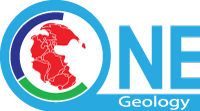2.6 Other layer metadata
The OneGeology Portal client will harvest the following information from each WMS layer.
Note, the indicative XPATH in the below tables relates to the GetCapabilities response document
| Metadata name | Indicative XPATH to metadata (WMS version is shown in brackets) |
||||
|---|---|---|---|---|---|
| name | /WMT_MS_Capabilities/Capability/Layer/Layer/Name (1.1.1) /WMS_Capabilities/Capability/Layer/Layer/Name (1.3.0) |
||||
As already detailed above
|
|||||
| title | /WMT_MS_Capabilities/Capability/Layer/Layer/Title (1.1.1) /WMS_Capabilities/Capability/Layer/Layer/Title (1.3.0) |
||||
As already detailed above.
|
|||||
| abstract | /WMT_MS_Capabilities/Capability/Layer/Layer/Abstract (1.1.1) /WMS_Capabilities/Capability/Layer/Layer/Abstract (1.3.0) |
||||
| You must provide a description of your layer data. You may wish to include other metadata, such as information about your organization and other data you make available. You may also wish to include a statement on access constraints.
|
|||||
| keywords (and short phrases) |
/WMT_MS_Capabilities/Capability/Layer/Layer/KeywordList/Keyword (1.1.1) /WMS_Capabilities/Capability/Layer/Layer/KeywordList/Keyword (1.3.0) |
||||
The Keyword "OneGeology" must be present to be able to search for services and layers with this The following broad concepts are good starting points http://eionet.europa.eu/gemet/concept?cp=2405 (earth science) http://eionet.europa.eu/gemet/concept?cp=3648 (geological process) Each keyword (or short phrase) must be contained within its own <keyword> element. In addition to this we also require you to add a number of special ‘Cataloguing keywords’ to help the *Continent: continent@value Required *Subcontinent: subcontinent@value Conditional *Geographic area (usually country): geographicarea@value Required *State(Region or province): subarea@value Conditional *Data provider: dataprovider@value Required *Service provider: serviceprovider@value Required The geographicarea@value represents a verbalization of the code that starts a layer name. For most The values for Continent, Subcontinent and Country must be taken from the United Nations (UN) list: Conditional keywords are required if they apply.
In addition we would like that you also supply the following two special ‘Metadata keywords’ for each *Layer (Data set) date: DS_DATE@value *Layer (Data set) topic category: DS_TOPIC@value (one or more as appropriate) The topic category is taken from the ISO 19119 topic category listing. A good reference to the
So for example, the layer “AFG AGS 1:1M Bedrock Age” would include the following keywords: <KeywordList> Note, that we have the country twice, once as one of the OneGeology Portal special keywords, and To help classify your service in the portal according to the thematic keyword list (as detailed in Appendix I), you should also use one or more thematic@value keywords. Please note services using GeoSciML-Portrayal also require the following keyword: Geosciml_portrayal_age_or_litho_queryable For those WMS layers with an associated GeoSciML WFS that you would like to query using the OneGeology Portal thematic analysis tool, you will need to add the appropriate GeoSciML32_wfs_age_or_litho_queryable or GeoSciML4_wfs_age_or_litho_queryable keyword. |
|||||
| Extent | /WMT_MS_Capabilities/Capability/Layer/Layer/LatLonBoundingBox (1.1.1) /WMS_Capabilities/Capability/Layer/Layer/EX_GeographicBoundingBox (1.3.0) |
||||
In WMS version 1.1.1 a list of (latitude-longitude decimal degree) coordinates defining an imaginary box that entirely encompasses the map data. It is always specified as minimum-X, minimum-Y, maximum-X, and maximum-Y. The purpose of these extent values is to facilitate geographic searches; values may be approximate. In WMS version 1.3.0 four elements each describing a single bounding limit (always in the order: west, east, south, north)
|
|||||
| Reference System Spatial (1.1.1) or Coordinate (1.3.0) |
/WMT_MS_Capabilities/Capability/Layer/Layer/SRS (1.1.1) /WMS_Capabilities/Capability/Layer/Layer/CRS (1.3.0) |
||||
A list of one or more horizontal ’ Spatial Reference Systems’ that the layer can handle (will accept For example, the exemplar service lists the following Spatial Reference Systems: The portal now supports a number of projection systems, including two suitable for INSPIRE compliance; see section 4.3.1.2 for a list of projections currently supported by the portal.
|
|||||
| BoundingBox | /WMT_MS_Capabilities/Capability/Layer/Layer/BoundingBox (1.1.1) /WMS_Capabilities/Capability/Layer/Layer/BoundingBox (1.3.0) |
||||
The BoundingBox attributes indicate the edges of the bounding box in units of the specified spatial Example WMS 1.1.1 response
<BoundingBox SRS=“EPSG:4326” minx=“-8.64846” miny=“49.8638” maxx=“1.76767” maxy=“60.8612” /> Example WMS 1.3.0 response
<BoundingBox CRS=“EPSG:4326” minx=“49.8638” miny=“-8.64846” maxx=“60.8612” maxy=“1.76767” /> Please note the swap in x,y axes order for the geographic coordinate systems EPSG:4258 and
|
|||||
| DataURL (optional) | /WMT_MS_Capabilities/Capability/Layer/Layer/DataURL (1.1.1) /WMS_Capabilities/Capability/Layer/Layer/DataURL (1.3.0) |
||||
This may be used to provide further information about all the digital data offered by the data provider,
<DataURL> |
|||||
| MetadataURL | /WMT_MS_Capabilities/Capability/Layer/Layer/MetadataURL (1.1.1) /WMS_Capabilities/Capability/Layer/Layer/MetadataURL (1.3.0) |
||||
You should supply one or more on-line resources offering detailed, standardized (either as "FGDC:1998" The core ISO 19115:2003 metadata required to be compliant is shown in Section 2.7. Note, there are no formatting requirements; this information could be provided as xml or html or text or pdf etc as long as it accessible on the web. Example WMS 1.1.1 response
<MetadataURL type=“TC211”> Example WMS 1.3.0 response
<MetadataURL type=“ISO 19115:2003”> Please note: the defined attribute value to indicate ISO 19115:2003 metadata is “ISO 19115:2003” in
|
|||||
| Minimum Scale | /WMT_MS_Capabilities/Capability/Layer/Layer/ScaleHint@min (1.1.1) /WMS_Capabilities/Capability/Layer/Layer/MinScaleDenominator (1.3.0) |
||||
A hint to the minimum scale at which the map will not be zoomed in beyond. This is cited in units |
|||||
| Maximum Scale | /WMT_MS_Capabilities/Capability/Layer/Layer/ScaleHint@max (1.1.1) /WMS_Capabilities/Capability/Layer/Layer/MaxScaleDenominator (1.3.0) |
||||
A hint to the maximum scale at which the map will not be zoomed out beyond. This is cited in units |
|||||
| Is the layer queryable | /WMT_MS_Capabilities/Capability/Layer/Layer@queryable (1.1.1) /WMS_Capabilities/Capability/Layer/Layer/@queryable (1.3.0) |
||||
Parameter to indicate whether a GetFeatureInfo request is allowed on the layer
|
|||||
| Legend url | /WMT_MS_Capabilities/Capability/Layer/Layer/Style/LegendURL (1.1.1) /WMS_Capabilities/Capability/Layer/Layer/Style/LegendURL (1.3.0) |
||||
We require you to have some sort of legend to accompany your map data. If you are using the latest
|
|||||
| Style name | /WMT_MS_Capabilities/Capability/Layer/Layer/Style/Name (1.1.1) /WMS_Capabilities/Capability/Layer/Layer/Style/Name (1.3.0) |
||||
| Computer readable name for the style. See below section 2.6.1 style examples. | |||||
| Style title | /WMT_MS_Capabilities/Capability/Layer/Layer/Style/Title (1.1.1) /WMS_Capabilities/Capability/Layer/Layer/Style/Title (1.3.0) |
||||
| Human readable title for the style. See below section 2.6.1 style examples. | |||||
Section last modified: 21 June 2016
